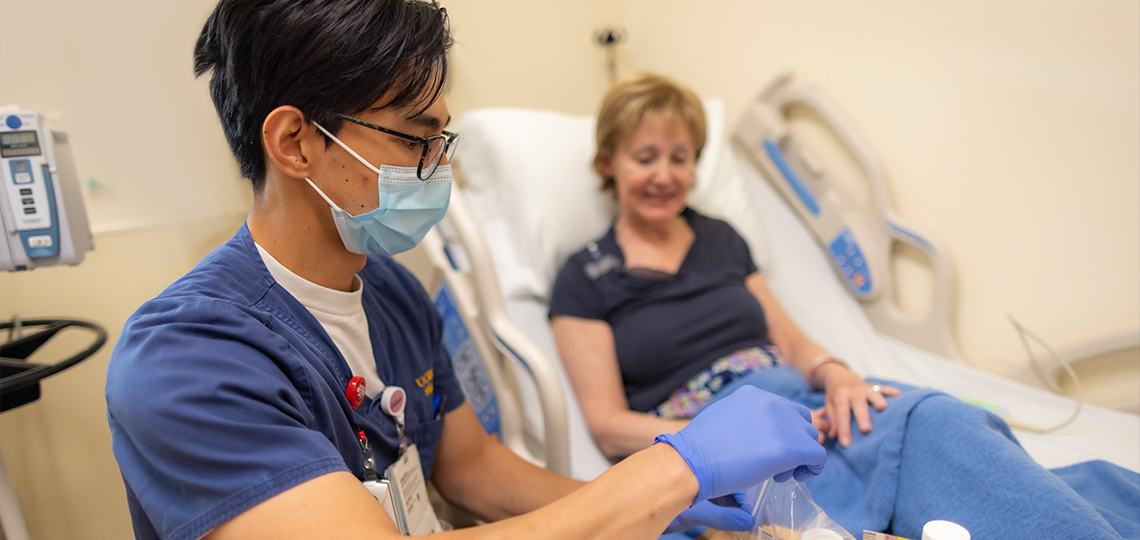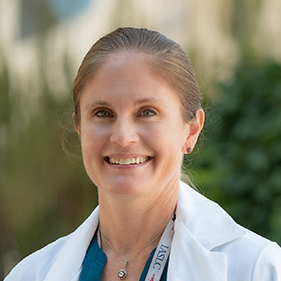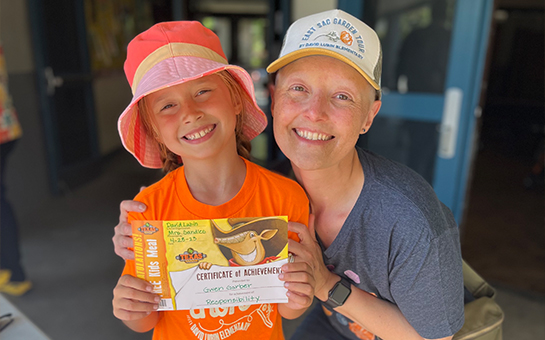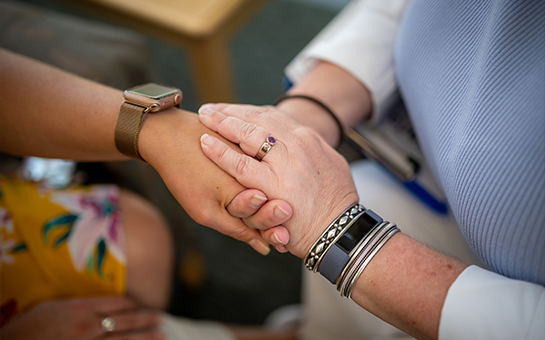These advances often start in academic medical centers such as UC Davis Comprehensive Cancer Center, where they undergo rigorous clinical trials to document their safety and efficacy.
“There’s a lot of really exciting work going on in oncology right now, and clinical trials are a major part of that,” said Megan Daly, associate director for clinical research at the cancer center. “Immunotherapy alone has extended lives by many years. In some cases, patients enrolled in clinical trials have gotten access to groundbreaking therapies well ahead of the curve.”
UC Davis Comprehensive Cancer Center has been expanding its clinical trials program to give patients more options. In 2024, the cancer center enrolled more than 350 patients in various studies, up from around 300 in previous years.
“We expanded our trials in areas where we had many patients who didn’t have an available trial,” said Daly. “By systematically reviewing our portfolio we identified those gaps and are actively finding trials for those patients.”
What clinical trials do
Clinical trials are rigorous studies that test new treatments, diagnostics or other aspects of care. The goal is to find better ways to help cancer patients. Over the past 50 years, almost every cancer care advancement was validated through clinical trials.
Trials are generally divided into three phases. Phase 1 studies are intended to determine safety and, if testing a therapy, to identify the most appropriate dose. Phase 2 trials are larger studies that involve more participants and focus on both safety and efficacy. Phase 3 is often the pivotal trial that determines whether the intervention can receive FDA approval.
“Randomized phase 3 trials are what bring new therapies to us,” said Daly. “At the same time, they are also how we avoid implementing therapies that don’t work. A negative trial helps us avoid approaches that may not be better for patients.”
The cancer center’s clinical trials come from numerous sources. Some are investigator-initiated, with UC Davis scientists advancing new ways to improve care. Others come from research collaborations, such as cooperative groups. Examples include the Southwest Oncology Group (SWOG), NRG Oncology (National Radiation Group) and the University of California Cancer Consortium. Others are sponsored by life sciences companies to test their drugs, devices or diagnostics.
Even before a new approach enters a clinical study, it must undergo years of lab testing to ensure its safety. From there, the cancer center rigorously oversees clinical trials to protect participants by means of the Institutional Review Board, a scientific review committee, disease-specific teams and other groups.
While some patients may worry about inadvertently being assigned to a group receiving only an ineffective placebo substance, that is never the case. In randomized trials, a new therapy is typically tested against the existing standard of care. Clinical trials are carefully designed to ensure that everyone receives effective care.
“The investigators at UC Davis, or any NCI-designated cancer center, take clinical trials incredibly seriously,” said Daly. “There are many safeguards for patient safety and privacy. Also, by taking part in a trial, participants often get an extra layer of support from the clinical trial team.”
We expanded our trials in areas where we had many patients who didn’t have an available trial.” —Megan Daly, associate director for clinical research
Making trials easier for patients
UC Davis has a huge patient catchment area, extending from the Central Valley north to Oregon and east to Nevada. As a result, many patients must travel long distances to participate in a trial. The cancer center is testing ways to lessen this burden. The team recently sponsored several trials involving fewer visits to study high-dose, ablative radiation to precisely target tumors.
“We tried to minimize the extra visits to make this available to as many patients as possible,” said Daly. “We specifically limited additional imaging studies or blood draws and tried to keep the data collection easy. These trials have been quite popular, and the patients coming from several hours away are excited to take part because there are no extra visits on top of what they would do for standard of care.”
Patients who live far away from the cancer center also are gaining access to clinical trials through the UC Davis Cancer Care Network (CCN). Enloe Health in Chico, which recently became a CCN affiliate, is making leading-edge clinical trials more accessible to rural residents in the northern part of the state. Other affiliates are located in Marysville, Cameron Park and Truckee.
Another way to improve cancer care is to de-escalate treatments without sacrificing efficacy. Hodgkin lymphoma is a good historical example. Early chemotherapy and radiation regimens were effective but toxic. However, in a series of trials, chemotherapy and radiation doses were reduced to make treatment safer and equally effective, leading to excellent outcomes for most Hodgkin patients today.
“We should always be asking if we are providing the best possible treatments in the best possible ways,” said Daly. “Can we lower the radiation dose or the number of chemotherapy infusions? Can we still maintain high cure rates for low-risk patients with slightly reduced schedules?”






